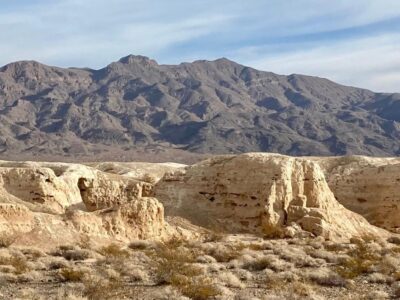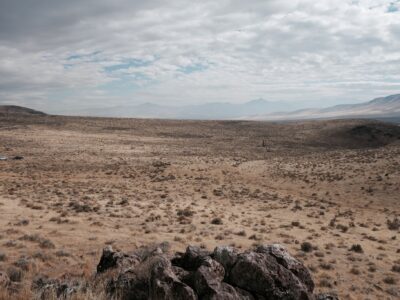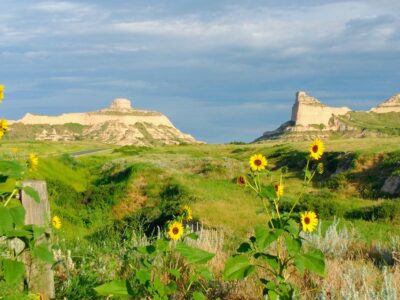“Refreezing the Arctic, where it possible, would be a huge defense against the global catastrophes currently threatened by continued global warming.” – Sir David Attenborough
The poles are two critical areas that have been struck hard by climate change. The Arctic Circle tundra and the icy continent of Antarctica are in serious trouble. Carbon emissions have sped up melting rates, causing glaciers to calve prematurely, raising sea levels.
Experts have warned that further meltdown would lead to more coastal flooding and land erosion. While getting nations to make greener choices is tricky, private companies, including those with polar region conservation plans, have stepped up.
Dutch startup Arctic Reflections wants to help save the ice left in the Arctic Circle. Since natural sea ice takes weeks to build up, it also melts faster when exposed directly to sunlight, especially during the summer. If all the sea ice melts, the ocean will absorb the heat, warming the planet further.
At the North Pole, the sun is out all day in summertime.
Arctic Reflections believes it has the solution: make the ice thicker to “reflect” the sun. Co-founder Fonger Ypma believes a practice in the Netherlands could save the Arctic sea ice in the summer.
During winter, canal systems across the Netherlands freeze over. They become skating rinks when the ice is thick enough, but the sun’s rays cause it to melt faster. The canals are often flooded with a thin layer of water to thicken the ice. Ypma told Fast Company he believes this system could work on a larger scale and may help restore the Arctic before it is too late.
Photo Courtesy Bryan Goff
Ice layering isn’t a new practice. Polar communities have relied on frozen lakes and rivers as roads for decades. Trucking companies use layering to strengthen ice roads in remote locations. Oil companies do something similar to create protective islands around rigs. However, these are on a smaller scale. Arctic Reflections is thinking about the bigger picture: the entire Arctic Circle. The company also wants to implement clean energy to mitigate its carbon footprint.
Water will be moved onto existing ice through a series of pumps. The process would take place in winter when the temperature is so frigid water freezes instantly.
The question is whether Arctic Reflections could successfully implement its strategy across three continents.
The Arctic Circle is massive, stretching from the shores of northern Canada, Alaska, and Greenland to Norway, Sweden, Finland, and Russia. And don’t forget about Iceland between them. The North Pole remains the central point of all these, but unlike its southern counterpart (Antarctica), the Arctic Circle doesn’t get the distinction of being a continent, and that is because of the annual ice retreat. It leaves the area at the whim of the government that occupies that section of the Circle.
Photo Courtesy Isaac Demeester
Canada controls the Arctic Archipelago, which includes Nunavut and the Northwest Territories. The U.S. government watches over Arctic Alaska. Russia declared control of its side of the Circle, and the Nordic states did the same. This reality creates a unique international situation, and unlike the Antarctic Treaty System that governs that continent, there is no formal Arctic treaty, making it harder to get through different rounds of red tape, which will vary country by country.
Sea ice is also precarious. Ypma told Fast Company that it can travel more than 1,000 kilometers (621 miles) a season, so some areas have more build-up than others. Thus, Arctic Reflections plans to work with Arctic action groups in these respective countries. Targeting specific areas with more ice will make the process easier. Many Inuit and First Nation peoples use the ice as a fishing ground, and we can’t forget about the mammals, birds, and marine life that call the Arctic ice cap home.
The company recently went to Canada to work with Real Ice, a climate action firm based in the United Kingdom, and the Cambridge Center for Climate Repair.
This trip was primarily for observations and to discuss preliminary steps for the ice layering endeavor.
They stayed at the Canadian High Arctic Research Station in Nunuvat, which opened in 2019 as a global hub for Arctic research. Most teams come in the summer when the weather is more hospitable. Arctic Reflections, Real Ice, and the Cambridge Center were only one of three research teams staying in the hub during winter.
Photo Courtesy Arctic Reflections
While on the ice, Arctic Reflections used a hydrogen fuel cell-powered pump and, despite some setbacks, managed to see some progress with its ice layering. In a blog post, Ypma said the team thickened the ice by an average of 25 centimeters (9.8 inches). The process creates a lot of slush, but once frozen, it will create a new layer of solid ice. Signs point to layering as a suitable method to artificially strengthen ice.
Fast Company reported that Arctic Reflections will visit the Norwegian Arctic Circle in April to continue research layering. The plan is to travel up the fjords and test the ice layering practice in another Arctic location.
Investors believe in the company’s mission. CarbonFix, a leading climate venture capital firm, is providing funds for further research. Chairman Siemon van den Berg signaled his support for Arctic Reflections’ approach to saving the Arctic.
“Arctic Reflections’ mission aligns perfectly with our vision, and we believe that their approach to Arctic Sea ice restoration may hold great promise in the fight against climate change, and its impact needs to be better understood,” he said in a statement.
Scientific studies suggest that sea ice accumulation is at serious risk of never returning to pre-climate change levels, even if the world weans off fossil fuels. This reality makes a global-scale Arctic conservation plan an imperative. If successful, Arctic Reflections’ work — along with lowering carbon emissions — offers a way to help save the remaining ice and strengthen it even further.





